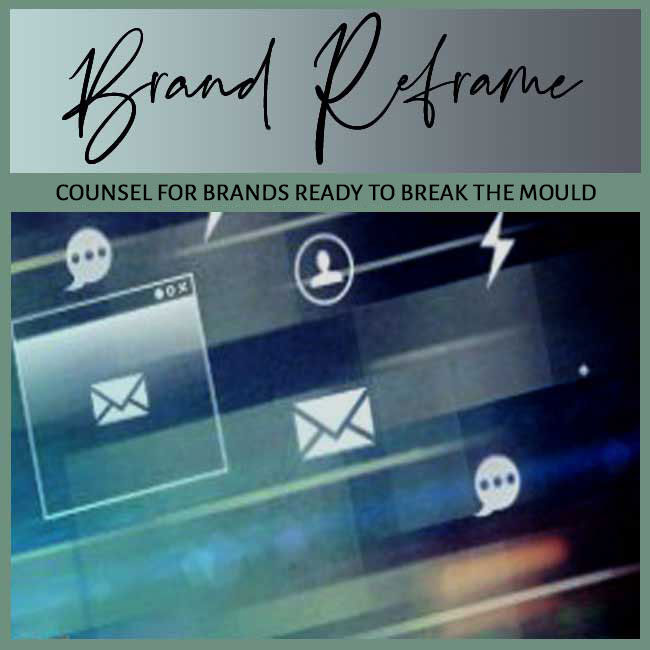
BY: SHOBHA PONNAPPA | BRAND BREAKTHROUGH STRATEGIST | 45 YEARS | 125+ CLIENTS
Brand clarity is the ability of a brand to express who it is, what it offers, and why it matters in a way that is instantly understood by its audience. It is not about saying more, but about saying the essential things so clearly that they cannot be misunderstood. A clear brand ensures that customers, employees, and partners all know what to expect, reducing friction and confusion in every interaction.
I’ve seen that clarity is often what separates brands that grow steadily from those that stall. When people grasp your brand’s essence quickly and confidently, they trust you sooner and act faster. Clarity helps avoid wasted energy, missed opportunities, and mixed signals. It ensures your communications reinforce one another, your culture reflects your promise, and your audience feels guided rather than overwhelmed.
In any crowded market, noise is constant and attention spans keep shrinking. Customers do not have the patience to decode confusing messages, inconsistent visuals, or vague promises. Brands without clarity force audiences to work too hard, and in most cases, people will simply walk away. Clarity has become the shortest path to trust.
A lack of clarity doesn’t just hurt customer acquisition; it erodes credibility over time. Confusion inside an organisation often mirrors confusion outside it, leading to misaligned teams and wasted budgets. On the other hand, when clarity is strong, every campaign, interaction, and innovation compounds meaning. In an age of complexity, clarity is the competitive advantage that simplifies choice and sustains preference.
Clarity begins with knowing who you are and why you exist. Identity is the anchor … your values, your mission, and your essence. Purpose provides the direction … what larger need you serve and why it matters. Together, they ensure the brand has a voice that feels consistent, grounded, and worth listening to.
When identity and purpose are well-defined, everything else becomes easier … messaging, design, hiring, and culture all flow from a solid base. Without them, a brand risks drifting into vagueness or contradiction. The more sharply these are defined, the faster people connect with the brand, because they sense conviction rather than uncertainty.
Clarity depends on a brand’s ability to stand apart in ways that are simple to grasp. Positioning answers the question “why choose us?” Differentiation reinforces it with evidence of how you deliver that promise better than alternatives. Positioning without clarity feels like noise; differentiation without clarity feels like trivia.
Brands that achieve clarity in positioning focus on what truly matters to their audience, not on listing every possible benefit. They use simple, memorable language and avoid jargon. This sharpness makes it easy for people to describe the brand to others, spreading the message organically. When clarity of position is strong, even a small brand can feel distinct in a crowded field.
Clarity is most visible in how a brand communicates. Messaging must distil the brand’s identity and positioning into words and narratives that are easy to understand, remember, and share. Storytelling brings that message to life, turning abstract ideas into relatable human experiences. The clearer the story, the stronger the connection.
Strong messaging avoids dilution by focusing on a few central themes and repeating them consistently. The power lies not in novelty but in reinforcement. Audiences must hear, see, and feel the same essence everywhere they encounter the brand. Over time, this consistency engraves the brand’s meaning into memory, making it second nature to recall and trust.
Clarity is tested not in statements but in experiences. Every touchpoint must align so the brand feels coherent whether someone is browsing a website, visiting a store, or speaking to customer support. Consistency transforms clarity from an intention into a reality customers can rely on.
When experiences contradict messaging, clarity collapses and trust is lost. But when every element is harmonised, customers feel guided and secure. Consistency doesn’t mean sameness … it means coherence. Brands with clear, consistent experiences create comfort, confidence, and loyalty that endure over time.
For new brands, clarity must be baked in from day one. Define your purpose, audience, and promise before you create visual identities or campaigns. A sharp foundation prevents the dilution that comes from trying to be everything to everyone. Early clarity is easier to scale than confusion that needs repair.
Focus on simplicity in early communications. Use direct language, clear visuals, and consistent cues so people quickly understand who you are. Align teams around the same definitions and reinforce them regularly. By making clarity a starting discipline rather than a later correction, you save resources and build trust faster.
Sustaining clarity means balancing consistency with evolution. As markets shift, the brand must adapt while keeping its essence intact. Refreshing language, updating visuals, or introducing new channels should all serve the same central identity and promise. Evolution done with clarity strengthens recognition rather than diluting it.
Internal alignment is essential for sustained clarity. Employees need regular reminders of the brand’s essence and guidance on how to embody it in their roles. When culture reflects clarity as much as messaging does, the brand becomes self-sustaining. The longer clarity is practised, the deeper it embeds into both audience memory and organisational behaviour.
One common mistake is over-complication … trying to say everything at once. When brands flood their audience with too many messages or layers of identity, clarity is the first casualty. Another pitfall is inconsistency, where teams or campaigns interpret the brand differently, leaving audiences confused.
A third pitfall is neglecting internal clarity. If employees can’t articulate the brand in a simple sentence, customers never will. Clarity must start inside and ripple outward. Neglecting this foundation leads to a brittle brand that fractures under scrutiny.
This firm was seen as a generic service provider. By clarifying its purpose, I helped in their “unlocking transformation through insight,” it created a sharp identity. The clarity allowed it to attract clients seeking not just advice, but meaningful change. Over time, its proposals stood out in competitive bids because the purpose-driven language resonated more deeply than technical jargon.
Initially competing on discounts, this brand struggled with loyalty. I repositioned it around “affordable quality that lasts.” Clarity in positioning drew customers who wanted value without compromise, lifting both trust and margins. The new stance also gave employees a clearer sense of pride in the brand, fuelling better customer service and reinforcing the new positioning.
Confusing medical jargon left patients unsure. By simplifying its message to “care you understand,” I helped the practice build a strong connection. Clarity in language reduced anxiety and built long-term trust. It also improved referrals, since patients could easily describe the practice to friends without confusion or hesitation.
The product was powerful but felt fragmented. I unified the design, support, and communication around a single promise of “simplicity that scales.” Clarity in experience improved retention and referrals. It also streamlined onboarding, as customers quickly grasped how the product worked and felt confident investing more features.
Donors felt disconnected because messaging shifted with campaigns. By aligning around “education that empowers,” I helped the non-profit create a unified story. Clarity attracted more loyal supporters and larger grants. The stronger focus also energised staff and volunteers, who could explain the mission simply and passionately, strengthening engagement across the board.
An old beverage brand risked irrelevance. By clarifying its promise as “heritage taste with modern wellness,” I enabled it to refresh its relevance without abandoning its roots. Clarity became the bridge between past and future. The repositioning allowed the brand to launch new product lines confidently, ensuring younger audiences embraced them while loyal customers still felt at home.
Simplicity removes detail. Clarity organises detail so meaning is unmistakable. A clear brand may still be rich and layered, but it never confuses. In fact, clarity often requires more discipline than simplicity, because it forces you to decide which details matter most and how to arrange them.
When audiences hesitate to describe you, when employees give inconsistent answers, or when marketing relies more on gimmicks than essence, clarity is fading. These signals demand a strategic reset. Another sign is when external partners misrepresent the brand, showing that even close allies don’t fully understand its promise.
No. Clarity provides a framework within which creativity can thrive. It ensures ideas contribute to a coherent story rather than scatter in random directions. In fact, many creative breakthroughs happen when constraints are clear, because focus sharpens innovation instead of diluting it.
Anchor in a global essence but adapt expressions locally. Clear brands define what must remain constant and what can flex. This balance preserves clarity while respecting cultural nuance. The sharper the central essence, the easier it is for teams to adapt expressions without losing meaning.
By focusing on sharp definitions rather than volume. Even a small brand with limited channels can achieve strong clarity if it communicates consistently and avoids dilution. In many cases, small brands outperform bigger ones on clarity because they can articulate their promise directly without corporate layers.
Embed it in culture. Train teams, codify principles, and revisit them regularly. When clarity becomes a shared discipline rather than a marketing exercise, scale amplifies it instead of eroding it. Leadership must keep reinforcing clarity at every stage, so expansion adds strength rather than scatter.
Explore Brand Clarity Issues … Real Cases & Fixes
Case Studies
FAQ Insights

"One BIG IDEA can turn brand stagnation into unstoppable movement. Spots are limited each week ... book your breakthrough session now."
Shobha Ponnappa
My Definitive Guides to Other Critical Branding Concepts
Smart insights, real-world frameworks, and idea-driven clarity – designed to help brands move.
Get my fortnightly Brand Reframe newsletter. Smart insights, distilled thinking, and focused momentum to help your brand lead.

Get my free AI strategy guide. Smart prompts, sharper briefs, and practical ways to make AI support your brand momentum.

Just fill in the form to join. Get my newsletter and the guide shown alongside, all with several game-changing tips.